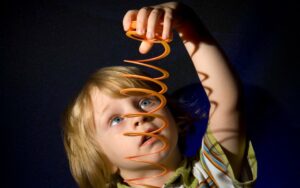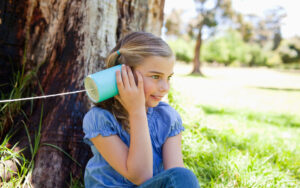Voices in the Sea Workshop
Marine mammals rely on sound for communication, foraging, navigation and predator avoidance. The NMMF explores the sounds these animals make, the sounds they hear, and the effects of human-made noise on their behavior and physiology.

The NMMF has developed advanced instrumentation to test the hearing of wild marine mammals and determine safe sound exposure levels. This workshop introduces students to the innovative methods used by NMMF scientists and includes interactive activities that demonstrate the science of sound.
Voices in the Sea STEAM Activities

Spoon and String Activity
Grades: All
NGSS: MS-LS1-8. Gather and synthesize information that sensory receptors respond to stimuli by sending messages to the brain for immediate behavior or storage as memories.

Noisemaker Activity
Grades: K-2
NGSS: 1-PS4-1. Plan and conduct investigations to provide evidence that vibrating materials can make sound and that sound can make materials vibrate.

Sounds and Waves Activity
Grades: All
NGSS: 4-PS3-2. Make observations to provide evidence that energy can be transferred from place to place by sound, light, heat, and electric currents.

Balloons Simulate Dolphin Whistles
Grades: All
NGSS: 1-PS4-4. Use tools and materials to design and build a device that uses light or sound to solve the problem of communicating over a distance.

Cup and String Activity
Grades: K-2
NGSS: 1-PS4-4. Use tools and materials to design and build a device that uses light or sound to solve the problem of communicating over a distance.

Singing Wine Glass Activity
Grades: 6-8
NGSS: MS-PS4-2. Develop and use a model to describe that waves are reflected, absorbed, or transmitted through various materials.





